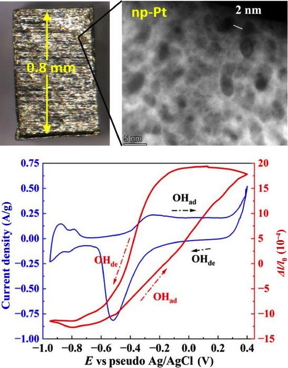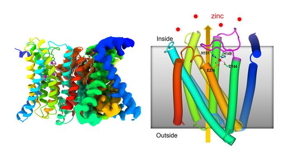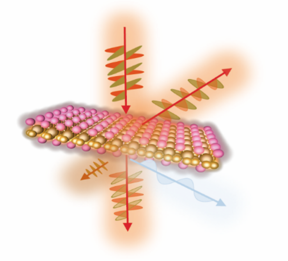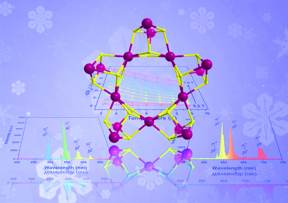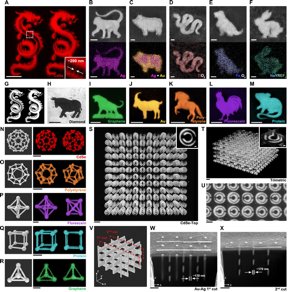Home > Press > Curcumin nanoemulsion is tested for treatment of intestinal inflammation: A formulation developed by Brazilian researchers proved effective in tests involving mice
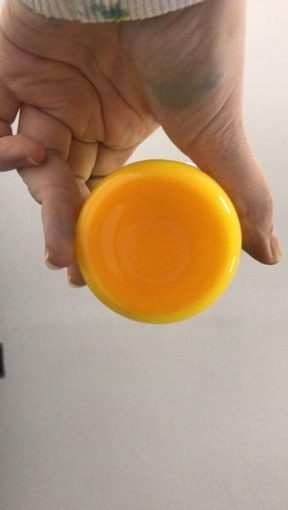 |
| The nanoemulsion enhanced the bioavailability of the curcumin and resulted in increased abundance of beneficial bacteria in the murine gut microbiota
CREDIT |
Abstract:
A nanoemulsion containing particles of curcumin, which is known to have anti-inflammatory and antioxidant properties, was found capable of modulating the gut microbiota of mice with intestinal inflammation in experiments conducted by researchers at the University of Western São Paulo (UNOESTE) and São Paulo State University (UNESP) in Brazil.
Curcumin nanoemulsion is tested for treatment of intestinal inflammation: A formulation developed by Brazilian researchers proved effective in tests involving mice
São Paulo, Brazil | Posted on March 8th, 2024
The study was supported by FAPESP (projects 22/12823-0, 20/15185-0 and 17/03879-4), and is reported in an article published in the International Journal of Pharmaceutics.
Curcumin, a natural substance belonging to the group of bioactive compounds called curcuminoids, is a yellow polyphenolic pigment found in the turmeric plant (Curcuma longa). It has gained prominence in treatments to combat inflammatory intestinal disorders, but its bioavailability is low when it is administered orally. This problem is exacerbated in patients with Crohn’s disease, ulcerative colitis and other conditions associated with inflammation of the digestive tract and gut microbiota alterations.
To enhance the efficacy of curcumin in such cases, the scientists developed an emulsion containing nanometric particles of the compound (invisible to the naked eye). “The research comprised two stages. The first entailed producing a nanoemulsion to deliver the curcumin. In the second, we evaluated its stability, morphology and physicochemical properties,” said Lizziane Kretli Winkelströter Eller, last author of the article and a professor at UNOESTE.
Next, to test the action of the nanoemulsion in mice, the researchers induced intestinal inflammation using a drug called indomethacin and administered the nanoemulsion orally for 14 days. At the end of this period, they evaluated the intestinal inflammation by macroscopic, histopathological and metagenomic analysis.
The results showed that the nanoemulsion effectively improved the bioavailability of curcumin and modulated the gut microbiota of the mice after the damage was caused by the drug, increasing the presence there of beneficial bacteria. “The nanoemulsion didn’t lead to a significant improvement in the intestinal inflammation, but the relative abundance of Lactobacillus bacteria was about 25% higher in the mice treated with curcumin nanoemulsion than in the control group,” Eller said.
The authors of the study, the first to measure the effects of curcumin nanoemulsion in this way, stressed the importance of developing novel formulations that enhance the efficacy of curcumin in preventing and treating inflammatory bowel disease, since it has proved to be a valid alternative to existing treatments, which are expensive and have significant side effects.
The group continues to conduct research on the potential of nanoformulations to deliver nutraceuticals (food elements of plant or animal origin with significant health benefits). “Specifically with regard to the curcumin nanoemulsion, we’re adjusting the formulation to increase the bioavailability of the active ingredient and will soon apply it in other protocols for the prevention and treatment of intestinal damage,” Eller said.
####
About Fundação de Amparo à Pesquisa do Estado de São Paulo
The São Paulo Research Foundation (FAPESP) is a public institution with the mission of supporting scientific research in all fields of knowledge by awarding scholarships, fellowships and grants to investigators linked with higher education and research institutions in the State of São Paulo, Brazil. FAPESP is aware that the very best research can only be done by working with the best researchers internationally. Therefore, it has established partnerships with funding agencies, higher education, private companies, and research organizations in other countries known for the quality of their research and has been encouraging scientists funded by its grants to further develop their international collaboration. You can learn more about FAPESP at www.fapesp.br/en and visit FAPESP news agency at www.agencia.fapesp.br/en to keep updated with the latest scientific breakthroughs FAPESP helps achieve through its many programs, awards and research centers. You may also subscribe to FAPESP news agency at http://agencia.fapesp.br/subscribe .
For more information, please click here
Contacts:
Heloisa Reinert
Fundação de Amparo à Pesquisa do Estado de São Paulo
Cell: 55-11966392552
Copyright © Fundação de Amparo à Pesquisa do Estado de São Paulo
If you have a comment, please Contact us.
Issuers of news releases, not 7th Wave, Inc. or Nanotechnology Now, are solely responsible for the accuracy of the content.
| Related Links |
| Related News Press |
News and information
![]()
Researchers develop artificial building blocks of life March 8th, 2024
Possible Futures
![]()
Nanoscale CL thermometry with lanthanide-doped heavy-metal oxide in TEM March 8th, 2024
![]()
Optically trapped quantum droplets of light can bind together to form macroscopic complexes March 8th, 2024
Nanomedicine
![]()
High-tech ‘paint’ could spare patients repeated surgeries March 8th, 2024
![]()
Researchers develop artificial building blocks of life March 8th, 2024
![]()
Superbug killer: New synthetic molecule highly effective against drug-resistant bacteria February 16th, 2024
Discoveries
![]()
What heat can tell us about battery chemistry: using the Peltier effect to study lithium-ion cells March 8th, 2024
![]()
Researchers’ approach may protect quantum computers from attacks March 8th, 2024
![]()
High-tech ‘paint’ could spare patients repeated surgeries March 8th, 2024
![]()
Nanoscale CL thermometry with lanthanide-doped heavy-metal oxide in TEM March 8th, 2024
Announcements
![]()
What heat can tell us about battery chemistry: using the Peltier effect to study lithium-ion cells March 8th, 2024
![]()
Nanoscale CL thermometry with lanthanide-doped heavy-metal oxide in TEM March 8th, 2024
![]()
Optically trapped quantum droplets of light can bind together to form macroscopic complexes March 8th, 2024
Interviews/Book Reviews/Essays/Reports/Podcasts/Journals/White papers/Posters
![]()
Researchers develop artificial building blocks of life March 8th, 2024
![]()
Nanoscale CL thermometry with lanthanide-doped heavy-metal oxide in TEM March 8th, 2024
![]()
Optically trapped quantum droplets of light can bind together to form macroscopic complexes March 8th, 2024
Nanobiotechnology
![]()
High-tech ‘paint’ could spare patients repeated surgeries March 8th, 2024
![]()
Researchers develop artificial building blocks of life March 8th, 2024
![]()
Superbug killer: New synthetic molecule highly effective against drug-resistant bacteria February 16th, 2024
- SEO Powered Content & PR Distribution. Get Amplified Today.
- PlatoData.Network Vertical Generative Ai. Empower Yourself. Access Here.
- PlatoAiStream. Web3 Intelligence. Knowledge Amplified. Access Here.
- PlatoESG. Carbon, CleanTech, Energy, Environment, Solar, Waste Management. Access Here.
- PlatoHealth. Biotech and Clinical Trials Intelligence. Access Here.
- Source: http://www.nanotech-now.com/news.cgi?story_id=57460
- :has
- :is
- :not
- $UP
- 10
- 14
- 16th
- 2023
- 26
- 4
- 5
- 7
- 7th
- 8th
- a
- About
- abundance
- access
- accuracy
- Achieve
- Action
- active
- adjusting
- administered
- advanced
- After
- against
- agencies
- agency
- All
- also
- alterations
- alternative
- an
- analysis
- and
- animal
- Apply
- approach
- ARE
- article
- artificial
- AS
- associated
- At
- author
- authors
- awards
- aware
- Bacteria
- battery
- BE
- been
- belonging
- beneficial
- benefits
- BEST
- Better
- bind
- Blocks
- Brazil
- Brazilian
- breakthroughs
- Building
- but
- by
- called
- CAN
- capable
- cases
- caused
- Center
- Centers
- CGI
- chemistry
- click
- collaboration
- COM
- combat
- comment
- Companies
- Compound
- Comprised
- computers
- conditions
- Conduct
- conducted
- containing
- content
- continues
- control
- could
- countries
- credit
- damage
- Days
- de
- del
- deliver
- Derivatives
- develop
- developed
- developing
- Discovers
- Disease
- disorders
- do
- done
- drug
- Education
- effect
- Effective
- effectively
- effects
- efficacy
- elements
- encouraging
- end
- enhance
- enhanced
- established
- Ether (ETH)
- evaluated
- existing
- expensive
- experiments
- eye
- February
- fellowships
- Fields
- First
- food
- For
- form
- formulation
- formulations
- found
- Foundation
- frameworks
- from
- funded
- funding
- further
- gained
- gif
- grants
- Group
- Have
- Health
- helps
- higher
- Higher education
- highly
- http
- HTTPS
- if
- importance
- improved
- improvement
- in
- In other
- Inc.
- Increase
- increased
- increasing
- inflammation
- inflammatory
- information
- ingredient
- Institute
- Institution
- institutions
- International
- internationally
- Investigators
- invisible
- involving
- IT
- ITS
- journal
- jpg
- Keep
- killer
- knowledge
- known
- Last
- latest
- lead
- Leads
- LEARN
- light
- linked
- links
- Low
- many
- March
- materials
- May..
- measure
- mechanism
- mice
- million
- Mission
- molecule
- more
- nanotechnology
- Natural
- net
- New
- news
- novel
- now
- of
- on
- only
- or
- organizations
- Origin
- Other
- Other Protocols
- overall
- paint
- pandemic
- partnerships
- patients
- period
- PHP
- plant
- plato
- Plato Data Intelligence
- PlatoData
- please
- Post
- posted
- potential
- presence
- press
- Press Release
- preventing
- Prevention
- private
- Private Companies
- Problem
- producing
- Professor
- Programs
- projects
- prominence
- properties
- protect
- protection
- protocols
- proved
- public
- published
- quality
- Quantum
- quantum computers
- receives
- regard
- relative
- release
- Releases
- repeated
- Reported
- research
- Research Institutions
- researchers
- responsible
- resulted
- Results
- return
- Said
- Save
- scholarships
- scientific
- Scientific Research
- scientists
- Search
- Second
- Share
- showed
- side
- significant
- since
- Soft
- solely
- Soon
- Stability
- stages
- start
- State
- Study
- submit
- subscribe
- substance
- such
- Supported
- Supporting
- Surface
- synthetic
- team
- tell
- test
- tested
- tests
- than
- that
- The
- The State
- their
- There.
- therefore
- they
- this
- Through
- to
- together
- trapped
- treated
- treating
- treatment
- treatments
- two
- Universal
- university
- updated
- us
- using
- valid
- very
- Visit
- was
- Water
- Wave
- Way..
- we
- Western
- when
- which
- will
- with
- working
- Yahoo
- yellow
- you
- zephyrnet














